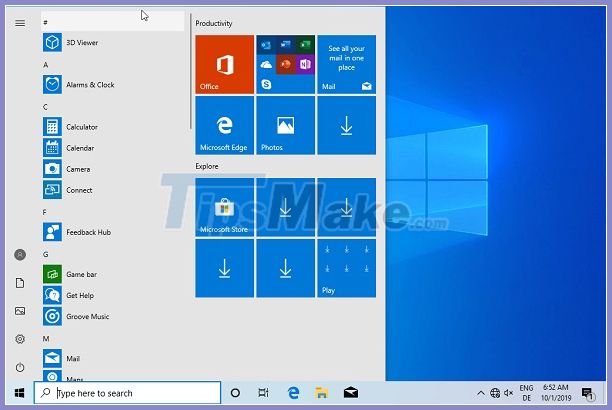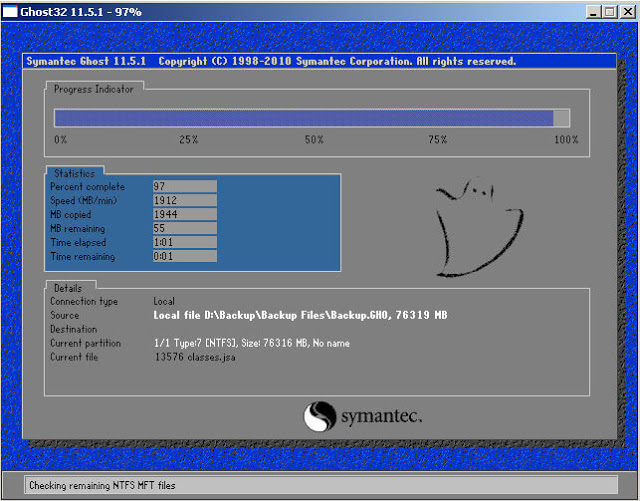Windows 10 1909 32 bit and 64 bit latest Download Link google drive
Windows 10 1909 is the next major version of the Windows operating system, completed in November 2019 and will officially launch in October. Unlike previous versions, this version does not include any features or features.
Any major change that was only provided as a minor update to improve the update was announced in May 2019.
Link Download Windows 10 1909
- Windows 10 1909 32 bit Win10_1909_English_x32.iso: Link google drive here
- Windows 10 1909 64 bit Win10_1909_English_x64.iso: Link google drive here
These are all versions of AIO (All in One) taken directly from Microsoft's website, thus integrating all versions of this operating system, including:
- Windows 10 S
- Windows 10 SN
- Windows 10 Home
- Windows 10 Home N
- Windows 10 Pro
- Windows 10 Pro N
- Windows 10 Pro for Workstations
- Windows 10 Pro for Workstations N
- Windows 10 Core Single Language
- Windows 10 Education
- Windows 10 Education N
During the installation of Windows 10 1909, the system will ask you to enter the installation key, choose the keys below corresponding to the version you choose:
Windows 10 Home: TX9XD-98N7V-6WMQ6-BX7FG-H8Q99
Windows 10 Professional: W269N-WFGWX-YVC9B-4J6C9-T83GX
Windows 10 Professional N: MH37W-N47XK-V7XM9-C7227-GCQG9
Windows 10 Enterprise: NP-D2C8J H872K-2YT43
Windows 10 Enterprise N: DPH2V-TTNVB-4X9Q3-TJR4H-KHJW4
Windows 10 Education: NW6C2-QMPVW-D7KKK-3GKT6-VCFB2
Windows 10 Education N: 2WH4N-8QGBV-H22JP-CT43Q-MDWWJ
WINDOWS 10 VERSION 1909 WHAT'S NEW?
1. Windows 10 Version 1909 Does Not Requires Reinstall
If you are already running Windows 10 May 2019 Update, version 1903 then your device will get version 10 1909 as a cumulative update through Windows Update and the installation will be similar to the updates. Update you receive each month. Using this new method, Microsoft hopes the upgrade will be faster and less intrusive as it doesn't require a complete reinstallation.
However, if your device is running an older version of Windows (such as an update from October 2018), the upgrade will require a full reinstall of Windows 10.
 Download Windows 10 1909 32bit 64bit latest version Link google drive Picture 1
Download Windows 10 1909 32bit 64bit latest version Link google drive Picture 1
As usual, Microsoft plans to use artificial intelligence to detect and deliver updates to compatible devices, thereby minimizing issues during deployment. Until the new version has been fully tested, the company will support the update more widely.
You will also be able to install Windows 10 1909 Update using the Media Creation Tool and Update Assistant, the installation process will remain the same as in previous versions. Or you click Link to download ISO file Windows 10 ver 1909 to see instructions on how to download the installer now.
2. Windows 10 Version 1909 Is An Optional Update
Microsoft plans to release this feature update as an optional update, meaning it won't download itself if you don't start the Windows Update installation manually. However, if your device is running an expiring version of Windows 10, 1909 will also install automatically.
3. New Features
In terms of new features and changes, Windows 10 version 1909 is just a minor update with some improvements related to notifications, battery life, and processor. You can also create events using a timetable and a few other adjustments.
4. Microsoft is Testing a New Update Method
Despite announcing 2 feature updates per year for Windows 10 with some improvements, starting with version 1909 (19H2), Microsoft has decided to test a new way to protect the updates from a risk. violated.
Specifically, instead of releasing two versions that require full installation, Microsoft only publishes the first major update of the year (which will require reinstallation), and then a minor update that acts as one. Cumulative updates through Windows Update.
Some new features are updated
- Support for Alexa, Cortana on lock screen
- Quick support for events in Calendar quickly from Taskbar
- Allows you to customize the way notifications are displayed on Windows 10
- Automatically expand the Start Menu to display more information for easy user choice
- Change UI in File Explorer, and improve search capabilities
- Boost performance and speed with Intel Turbo Boost Technology 3.0 (this feature only works on processors that support Intel Turbo Boost Technology 3.0)
- Improved battery life
- Improved performance when used with heavy software
- Improved inking latency
- Improved security mode on Windows 10.
You should read it
- Ghost Windows 10 Pro 1909 64 / 32bit Full Soft 2020
- Windows 10 1809 and 1909 officially discontinued support
- Latest update for Windows 10 1909 keeps users from signing in to Microsoft 365 apps
- Microsoft issues an urgent warning to users of Windows 10 versions 1909 and 20H2
- Changes in Windows 10 19H2 coming soon, should an upgrade?
- Microsoft released emergency patch updates for Windows 10
- There is Windows 10 November 2019 Update, please update
- Microsoft reminds users: Windows 10 v1909 is about to die, take note!
- You will not be able to upgrade Windows 10 if you are using the old version of AVG, Avast applications
- Windows 10 users should update immediately
- Microsoft patch prevents Windows 10 1903 and 1090 users from updating to newer versions
- This is the most commonly used version of Windows 10 in the world
May be interested

Download Ghost Win 10 Pro 2004 No Soft and Win 10 Pro Themes standard 2020

Link Download Windows And Ghost Windows Latest 2020

Download Ghost win xp, win 7, 8, 10 32 and 64bit Link Google Drive

Ghost Win 7 Ultimate 64 bit, 32 bit, Full Soft, Full Driver

Create windows 10 bootable usb, install Windows 10 using USB

How to install drivers for the computer






 Difference between 32-bit and 64-bit Windows?
Difference between 32-bit and 64-bit Windows? 6 things to know when choosing 32-bit or 64-bit Windows 7?
6 things to know when choosing 32-bit or 64-bit Windows 7? Download the Canon 3300 Driver for Windows 7, Windows 10, 32Bit, and the latest 64Bit
Download the Canon 3300 Driver for Windows 7, Windows 10, 32Bit, and the latest 64Bit Download Driver Canon 1210 for Windows 7, Windows 10, 32Bit, and the latest 64Bit
Download Driver Canon 1210 for Windows 7, Windows 10, 32Bit, and the latest 64Bit Link to download Windows 10 32bit and 64bit iso file without using Media Creation Tool
Link to download Windows 10 32bit and 64bit iso file without using Media Creation Tool Download Driver Canon 2900 for Windows 7, Windows 10, 32Bit, and the latest 64Bit
Download Driver Canon 2900 for Windows 7, Windows 10, 32Bit, and the latest 64Bit